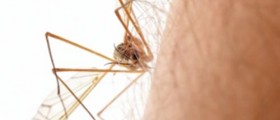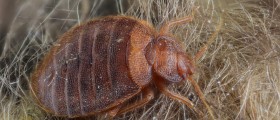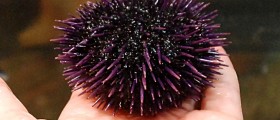
Even though some of us are amazed by the insect world, most of us give our best to avoid these inhabitants of our planet. Simply, insects attack, bite, suck blood and are, in general, hostile towards each other and others. Moreover, when we get bitten, stung or affected by insects in any other way, our skin usually gets inflamed, painful and swollen. Thus, in order to avoid this, most of us stay away from insects whenever possible.
If you desire to learn more about our skin reaction to insect bites, read the lines below.
Facts about Insects
Insects, in their adult stage of life, have their bodies covered by an exoskeleton, three pairs of jointed legs and a body which is separated by the head, thorax and abdomen. However, this classification does not signify that all insects are similar. Rather, there are countless different members of these species, encompassing numerous different classes such as dragonflies, true bugs, fleas, ants, bees, wasps, moths, butterflies, beetles and many others. All in all, there are about 10 million different species of insects, being responsible for more than 90% of our planet's diversity.
Due to the fact that insects are literally everywhere, we get in contact with them quite often, getting bitten or stung. The effects of this encounter are known to range from mild, over irritating, all the way to deadly.
Exotic Insects
Even though specific classes of insects are found in separate parts of the world, people usually enjoy having exotic lifeforms of the insect family kept as pets. Since these insects can deliver bites and stings as well, it is important for physicians and health staff treating these problems to known the exact culprit behind the injury.
Some people are allergic to insect bites and stings. As far as they are concerned, this encounter with insect may result in a severe allergic reaction of their organisms, leading to a state of anaphylactic shock, due to the exposure to insect saliva, venom, body parts, excretions or secretions. If this state of shock is not treated over the course of 10 minutes, it can lead to death.
Moreover, once a person is allergic to insect bites and stings, after already being bitten, he/she has up to 60% of undergoing the same reaction if he/she gets bitten once again.
Exotic insects are notorious for transferring diseases. For example, tics can transfer Lyme's disease. On the other hand, some types of mosquitoes are capable of giving people malaria.
Some insects found in the Central and South America may trigger Chagas disease, once they bite people, being potentially deadly. Additionally, ticks and mosquitoes are known to transfer the West Nile virus.
To make matters worse, some insect stings or bites, like those of blackflies found in South America and Africa, trigger side-effects which appear long time after the encounter.
Furthermore, some exotic insects may trigger dermatitis, cellulitis, urticaria or blistering, once they bite or sting a person. Also, fly larvae can lead to myaiasis, when these insects plant their eggs inside the open wounds of a human host, causing seizures.
Relatively Harmless Insects
Despite the fact that people are usually afraid of these insects, cockroaches hardly ever bite human beings. Furthermore, even when they do, their bite is completely harmless. Yet, these insects tend to leave their feces and remains around human dwellings, potentially triggering asthma or some viral and bacterial diseases.
Earwigs are also wrongfully accused of being dangerous. Namely, they cannot deliver anything more than a mild pinch and they do not enter human ears, leading to paralysis, contrary to popular belief. On the other hand, the above mentioned cockroaches are more likely to seek shelter in the human ear.
Statistical Data about Insects and their Bites and Stings
According to the information obtained by the American Association of Poison Control Centers, about 42,620 cases of insect exposure took place in 2007, as far as the US are concerned. In 200 of these cases, the outcome was categorized as mild-to-serious. In general, insects rarely deliver lethal bites or stings. Rather, deaths from exposure to insect usually take place due to allergic reactions to Hymenopthera stings. In the US, about 50-150 people die from contact with insects.
Additionally, as far as the rest of the world is concerned, a study carried out in Zimbabwe revealed that 1.5% of all people admitted to hospitals get there because they have been bitten or stung by insects. Globally, most people dying from insect bites actually die from malaria transferred through this contact.
All in all, various insects can deliver different types of stings and bites, resulting in numerous changes which affect our skin and the rest of our organism. These results may range from mild to serious ones.
Either way, if you are allergic to insect bites, stings or other forms of insect contact, you are advised to seek medical assistance as soon as this encounter takes place. In other cases, once the effects of a bite or a sting you have endured start getting serious, contact your doctor.

















Your thoughts on this
Loading...